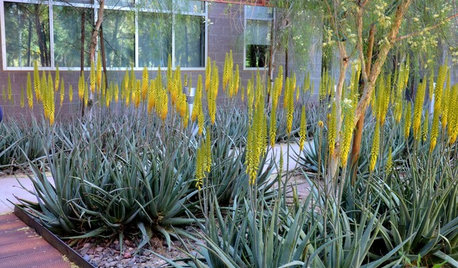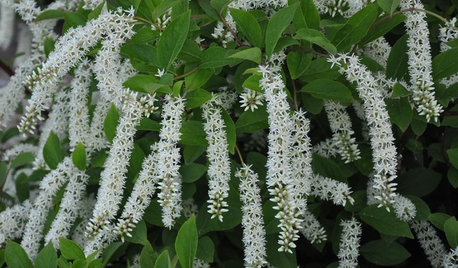What is considered "spring" for fertilization, repotting, etc?
lizzie_nh
10 years ago
Related Stories

GARDENING GUIDESGet on a Composting Kick (Hello, Free Fertilizer!)
Quit shelling out for pricey substitutes that aren’t even as good. Here’s how to give your soil the best while lightening your trash load
Full Story
LANDSCAPE DESIGNIs It Time to Consider Fake Grass?
With more realistic-looking options than ever, synthetic turf can be a boon. Find the benefits and an installation how-to here
Full Story
GARDENING GUIDESHow to Keep Your Citrus Trees Well Fed and Healthy
Ripe for some citrus fertilizer know-how? This mini guide will help your lemon, orange and grapefruit trees flourish
Full Story
GARDENING GUIDESCommon Myths That May Be Hurting Your Garden
Discover the truth about fertilizer, soil, staking and more to keep your plants healthy and happy
Full Story
GARDENING GUIDESHow to Switch to an Organic Landscape Plan
Ditch the chemicals for a naturally beautiful lawn and garden, using living fertilizers and other nontoxic treatments
Full Story
GARDENING GUIDESGreat Design Plant: Grow Blueberries for Their Fruit and More
Eastern gardeners should consider growing blueberry plants for their delicious fruits, bee-friendly spring blooms and brilliant fall foliage
Full Story
GARDENING GUIDESGreat Design Plant: Aloe Vera
Bright yellow flowering spikes decorate this popular aloe from late winter into spring, much to the delight of hummingbirds
Full Story
WINTER GARDENINGPruning Secrets for Exquisite Roses
Encourage gorgeous blooms year after year with this time-tested advice on how to prune your rosebush in winter for health and shape
Full Story
RED FOLIAGEGreat Design Plant: 'Little Henry' Sweetspire
Small in stature but big on impact, this fuss-free shrub promises spring flowers, fiery fall color and good manners in the garden
Full Story
EDIBLE GARDENSWhy Grow Quince? For Beauty, Fragrance and Old-Time Flavor
Delightfully perfumed fruit and lovely spring blossoms make this apple and pear cousin worth a spot in the garden
Full StoryMore Discussions










stewartsjon
trilliumfae
Related Professionals
Allen Landscape Architects & Landscape Designers · Oconomowoc Landscape Architects & Landscape Designers · Suffern Landscape Architects & Landscape Designers · Newcastle Landscape Architects & Landscape Designers · Forest City Landscape Architects & Landscape Designers · Paradise Landscape Architects & Landscape Designers · Tempe Landscape Contractors · Brookfield Landscape Contractors · Florham Park Landscape Contractors · Kettering Landscape Contractors · Middletown Landscape Contractors · Rancho Santa Margarita Landscape Contractors · Streamwood Landscape Contractors · Vancouver Landscape Contractors · Ogden Interior Designers & Decoratorstapla (mid-Michigan, USDA z5b-6a)
trilliumfae
tapla (mid-Michigan, USDA z5b-6a)
greentoe357
trilliumfae
greenman28 NorCal 7b/8a
tapla (mid-Michigan, USDA z5b-6a)
greentoe357
tapla (mid-Michigan, USDA z5b-6a)
greentoe357